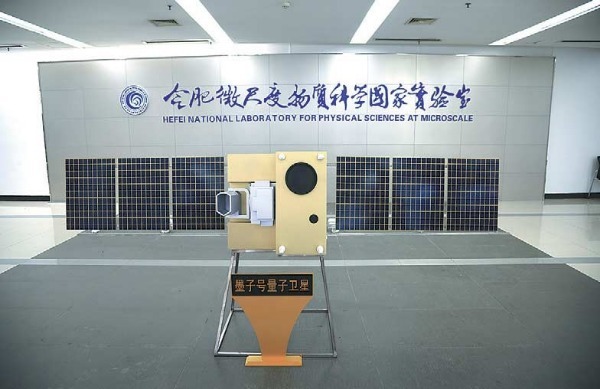Quantum communication technology


A quantum is the minimum unit of any physical entity involved in an interaction. Micro-particles, such as molecules, atoms and photons, are different forms of quantum. Quantum communication is a new method of communication using quantum entanglement for information transfer. It has been an emerging inter-discipline in the recent two decades, a new research field that combines quantum theory and information theory.
Quantum communication mainly involves quantum cryptographic communication, quantum teleportation and quantum dense coding. Recently, the discipline has seen practical application as supported by laboratory phases. As the only method that has been proved to offer unconditional security in communication, quantum communication is an effective solution to information security problems.
Compared with conventional communication technologies, quantum communication has ultra anti-interference capacity and does not need conventional channels to facilitate communication. In the meantime, there is next to no chance of decoding quantum communication codes; hence they can be used with strong confidentiality. What’s more, there is practically no line time delay in quantum communication, enabling exceptionally fast transmission.
Quantum communication was proposed only two decades ago. With rapid development momentum, it has generated a lot of interest in many nations. Quantum communication enjoys vast prospects in such areas as national defense, military and finance. It is anticipated that the technology will have unquantifiable impact on human society in the next 20 to 30 years.
The Micius (or “Mozi”) Quantum Experiment Satellite, the first experimental satellite established by China in the field of space quantum science and technology, was launched on August 16, 2016 at the Jiuquan Satellite Launch Center. Taken aloft by a Long March-2D rocket, the satellite entered a sun-synchronous orbit 500 kilometers above the earth. On January 18, 2017, it was available for scientific experiments after completion of in-orbit testing.
The Micius Satellite was named in homage to a Chinese Confucian scholar who lived 2,000 years ago and is known as the first scientist in the world to conduct optics experiments. The launch of Micius marks the beginning of a globalized effort to test quantum communication, space quantum physics, and quantum gravitation.
The Micius Satellite has completed three main scientific tasks ahead of schedule, including Quantum key distribution (QKD), quantum entanglement distribution and quantum teleportation. It has laid a solid scientific and technological foundation for China’s continued leadership in the world’s development of quantum communication technology as well as frontier research in testing basic problems of quantum physics at space scale.
The research team of the Micius quantum satellite was awarded the 2018 Newcomb Cleveland Prize for the achievement of satellite-to-earth entanglement distribution over 1000 kilometers. On December 17, 2018, the Micius Satellite was listed as one of Top 10 "Highlights of the Year" of 2018 by the American Physical Society .




